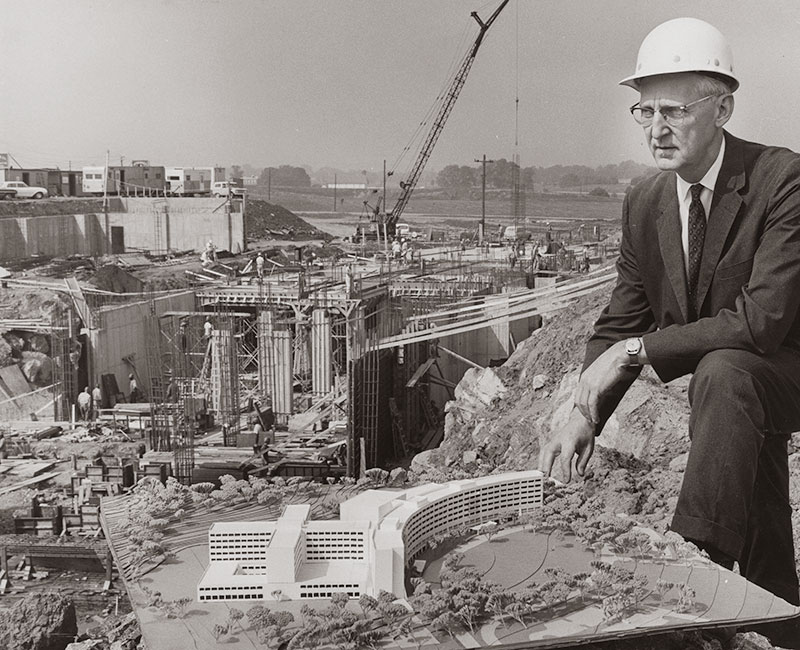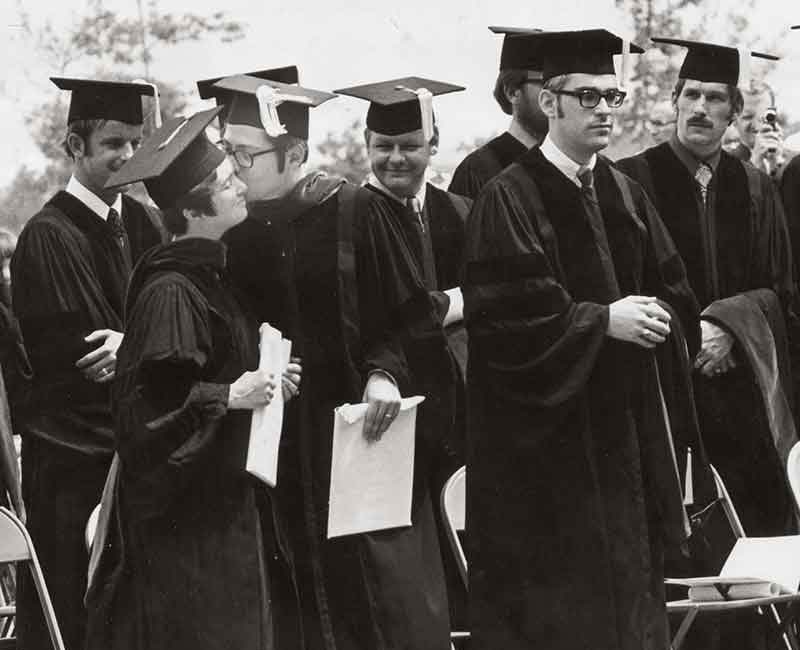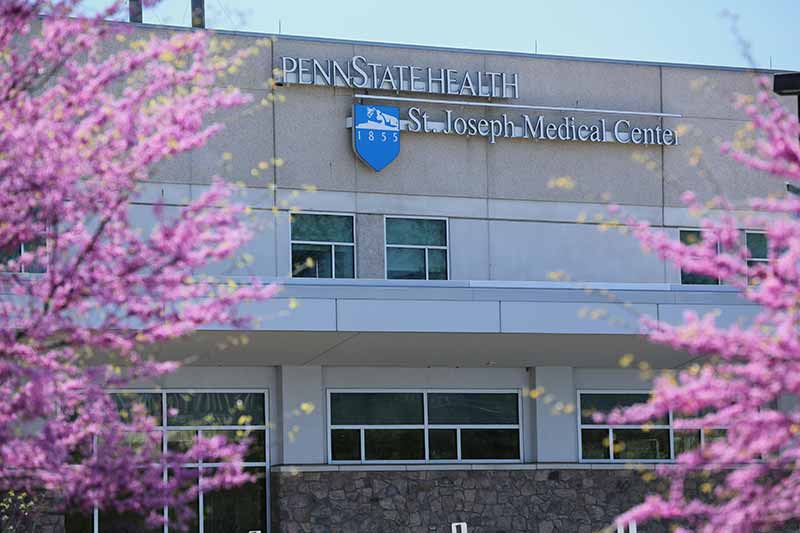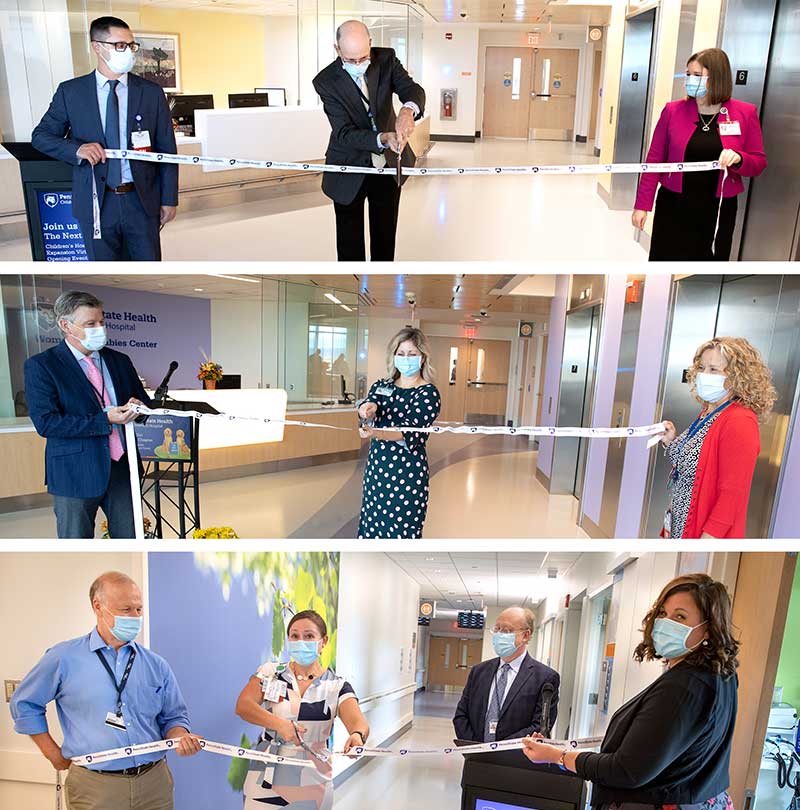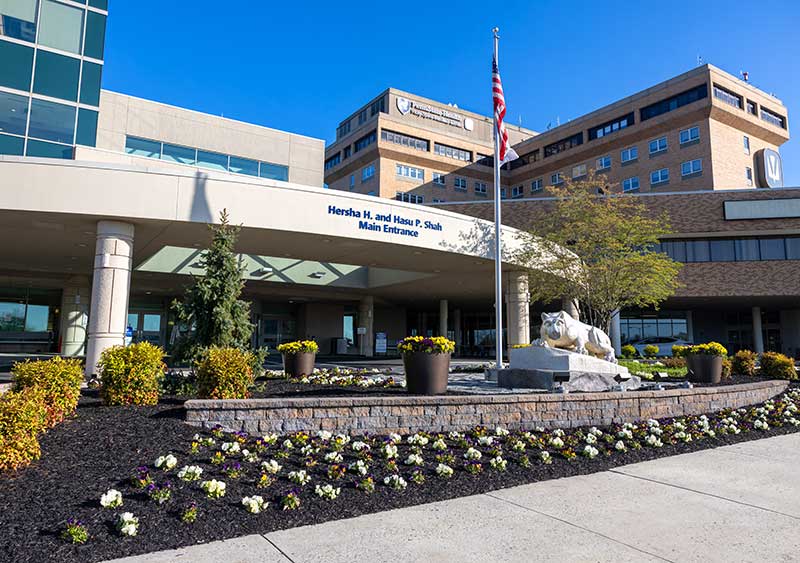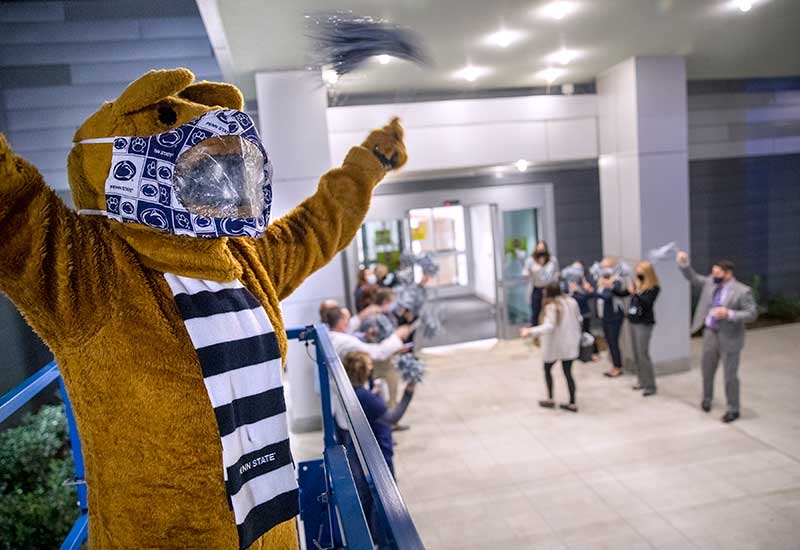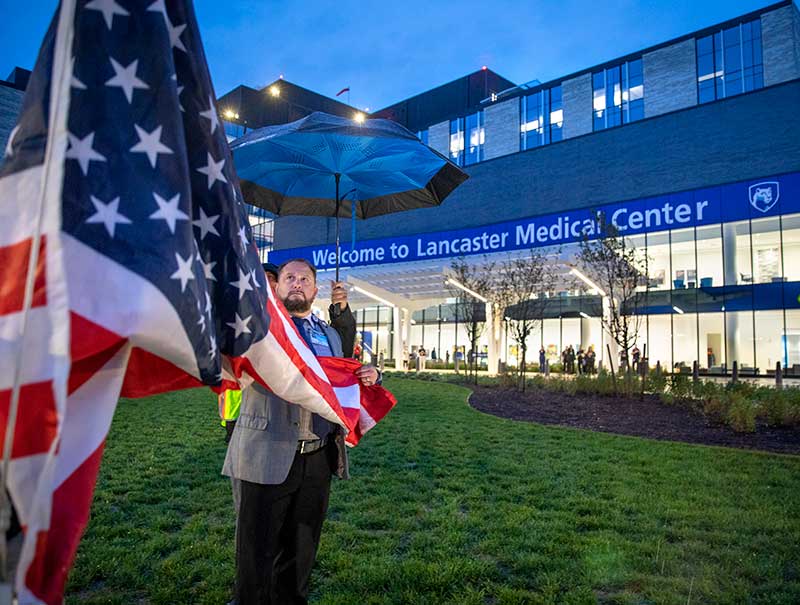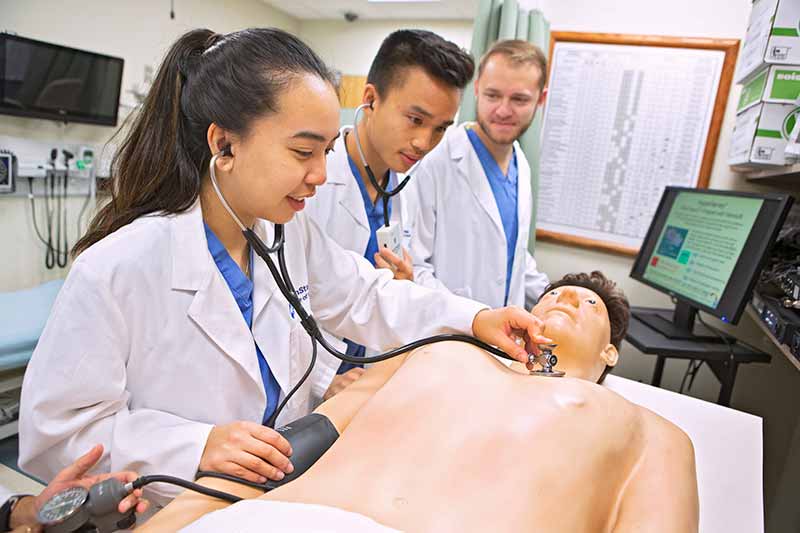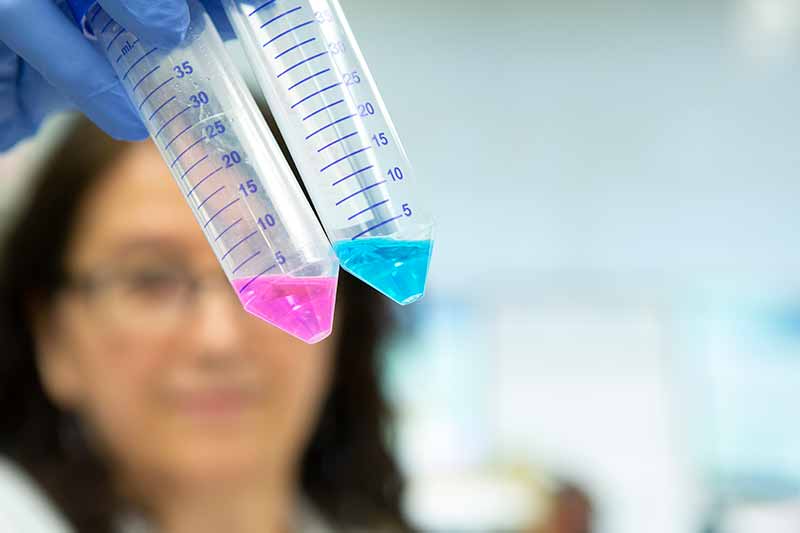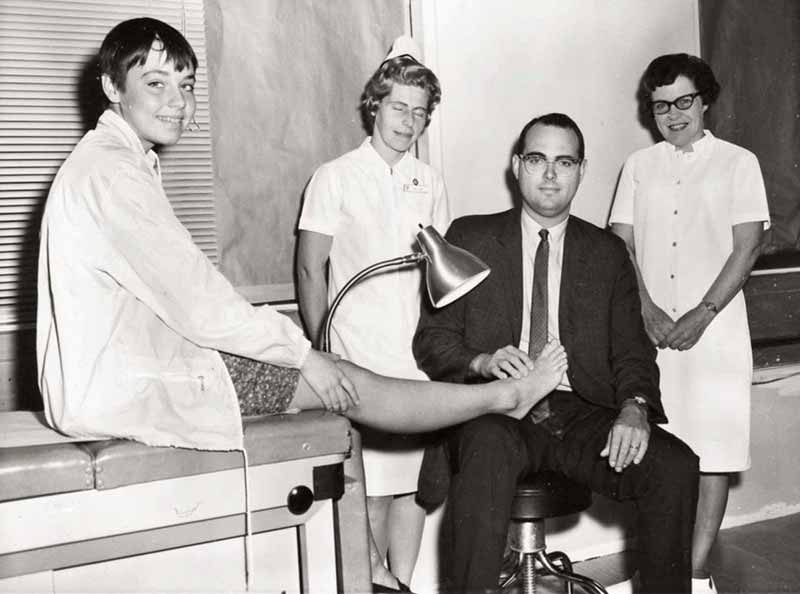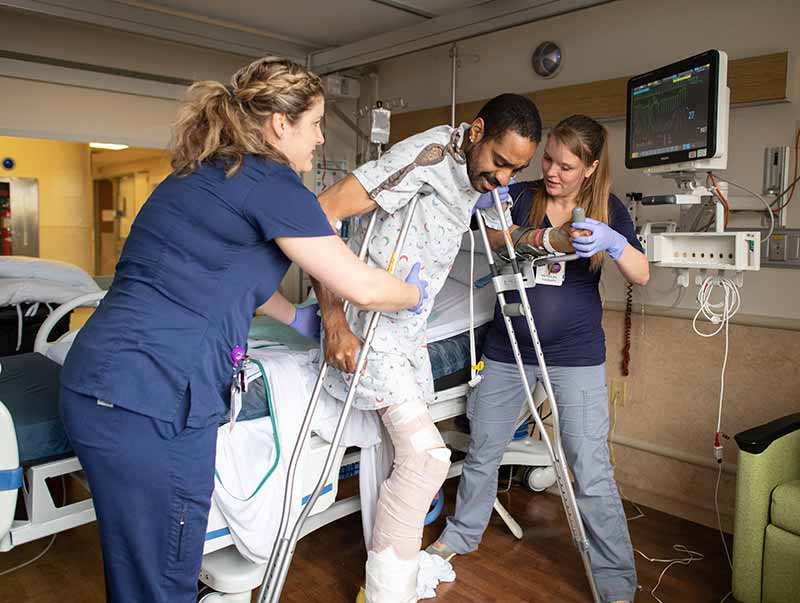Penn State Health Milton S. Hershey Medical Center and Penn State College of Medicine have a rich history of innovation, education and service to the community.
Learn how we started and have grown to be one of the nation's premier integrated academic health systems.
The “$50 Million Phone Call”
Samuel L. Hinkle, left, president and chairman of the Hershey Chocolate Corporation, reenacts his 1963 phone call to Penn State president Dr. Eric E. Walker in which he invited Walker to discuss establishing a medical school and teaching hospital in Hershey. The M. S. Hershey Foundation gave a $50 million gift to The Pennsylvania State University for the project. With this grant and $21.3 million from the U.S. Public Health Service, the University built Penn State College of Medicine and Milton S. Hershey Medical Center.
Penn State College of Medicine opened its doors to the first class of students in 1967.
Penn State Health
Penn State Health Milton S. Hershey Medical Center accepted its first patient on Oct. 14, 1970. Forty-four years later, the Penn State Board of Trustees formed Penn State Health, a multi-facility health system that today serves communities in 15 central Pennsylvania counties and employs 19,600 people. Milton S. Hershey Medical Center is recognized as one of the nation's premier academic health centers, providing high-level, patient-focused medical care. Its Hershey campus includes Penn State Health Children’s Hospital, the most comprehensive children’s hospital between Pittsburgh and Philadelphia; institutes focused on cancer, heart and vascular disease and the neurosciences; and Penn State College of Medicine.
In 2015, Penn State Health acquired St. Joseph Regional Health Network in Berks County. Penn State Health St. Joseph Medical Center includes an acute care hospital in Bern Township, Pa., and a downtown Reading campus. The rapidly growing health system expanded once again in 2017 to acquire Physicians’ Alliance LTD, the largest independent physician practice group in Lancaster County.
That same year, Penn State Health partnered with Highmark Health to facilitate the creation of a value-based, community care network in the region. Penn State Health now encompasses nearly 2,500 physicians and direct care providers at 186 outpatient locations.
To meet a steady increase in patient demand for services, Milton S. Hershey Medical Center expanded its Emergency Department and Children’s Hospital in 2020. The three-floor vertical expansion of the Children’s Hospital provided more space for a new Women and Babies Center, a 56-bed Level IV neonatal intensive care unit and the state’s only Small Baby Unit, created specifically for growth and improved brain development in premature babies.
In 2020, Penn State Health took another step forward as a regional health network by acquiring Holy Spirit Hospital in Camp Hill, its affiliated outpatient practices, The Ortenzio Heart Center and West Shore EMS.
Less than one year later, Penn State Health Hampden Medical Center, a $300 million acute care hospital, opened its doors to patients in Enola, Cumberland County.
Penn State Health Lancaster Medical Center opened in East Hempfield Township, Lancaster County in 2022 with 142 private inpatient beds, an emergency department, labor and delivery, and an attached medical office building.
Pennsylvania Psychiatric Institute, a specialty provider of inpatient and outpatient behavioral health services in Harrisburg, was created in 2008 through a joint venture by Penn State Health and another health system. It became fully part of Penn State Health in 2023.
Penn State Health also jointly operates Penn State Health Rehabilitation Hospital, Hershey Outpatient Surgery Center, Hershey Endoscopy Center, Lancaster Orthopedic Group and the Surgery Center of Lancaster.
These acquisitions, new facilities and joint ventures advanced Penn State Health’s long-term goal of ensuring everyone in the communities it serves is within 10 minutes of a Penn State Health primary care provider, 20 minutes of its specialty care services, and 30 minutes of a Penn State Health acute care hospital.
Penn State Health shares an integrated strategic plan and operations with Penn State College of Medicine. Faculty and physicians at the College of Medicine and Milton S. Hershey Medical Center combine the latest biomedical knowledge and technology with compassionate care of patients, while educating the next generation of scientists and physicians.
The College of Medicine boasts a portfolio of nearly $159 million in funded research and more than 1,700 learners and trainees in medicine, nursing, other health professions and biomedical research at its Hershey campus and a regional medical campus in State College.
The College of Medicine was the first in the nation to have a dedicated Department of Humanities and a Department of Family and Community Medicine. It recruits faculty members who are internationally known for their accomplishments in research, education and patient care.
Penn State College of Medicine offers doctor of philosophy degrees in anatomy, biomedical sciences, biostatistics, epidemiology and neuroscience; an MD/PhD Medical Scientist Training Program; a physician assistant master’s degree program; and master’s degrees in anatomy, clinical research, laboratory animal medicine and public health. Each year, approximately 570 resident physicians are trained in medical specialties at Milton S. Hershey Medical Center.
Continuing education programs serve health care professionals throughout Pennsylvania, with enrollment exceeding 39,000 each year.
With every person, practice and partner that joins Penn State Health, it brings more high-quality clinical care, clinical trials and education to the people of central Pennsylvania and beyond.




